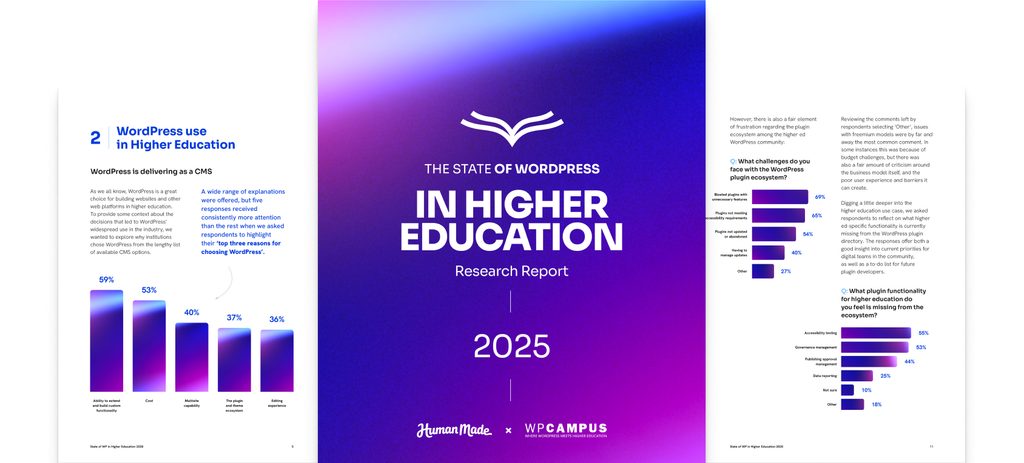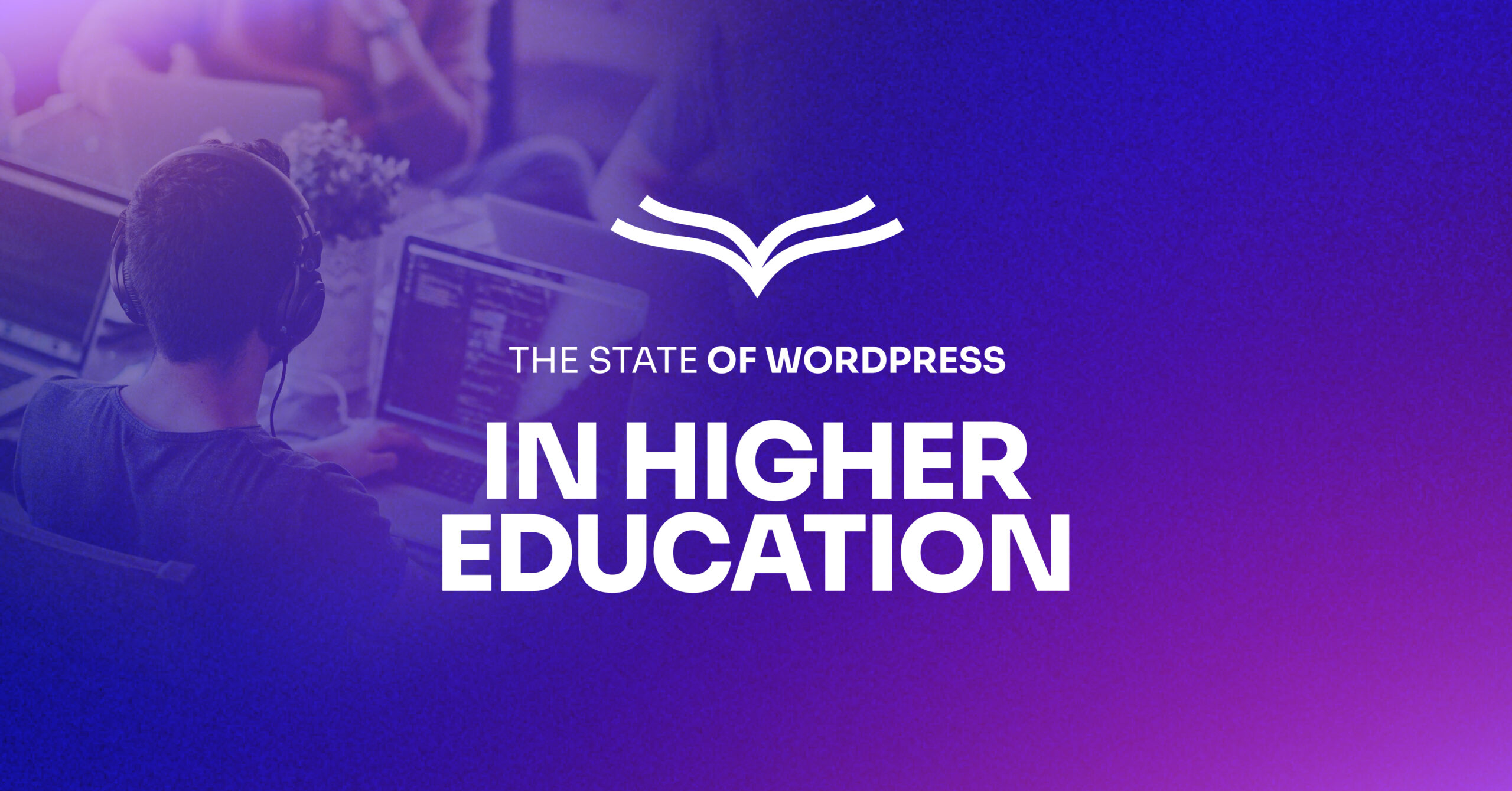The State of WordPress in Higher Education 2025 report – a first-of-its-kind collaboration between WPCampus and Human Made – lifts the lid on how universities are using WordPress today. Based on feedback from over 100 respondents working directly with WordPress in higher education, the report explores satisfaction levels, technical setups, content challenges, and the evolving role of the platform across the sector.
It’s clear from the data: WordPress is not just holding its ground in higher education – it’s thriving. But it’s also a time of change, caution, and re-evaluation.
Here are five of the most important takeaways from the report – and what they mean for universities evaluating their digital platforms.
1. WordPress is still the right fit, but expectations are rising
The top reasons for choosing WordPress among higher ed institutions reflect its strengths as a flexible, open-source CMS: extensibility (59%), cost (53%), multisite support (40%), plugins and themes (37%), and a positive editing experience (36%).
Encouragingly, 70% of respondents said WordPress meets or exceeds their expectations. But satisfaction isn’t guaranteed. Some flagged frustrations with the block editor and Full Site Editing (FSE), while others voiced concerns about performance and usability. Still, only 23% said they’d consider switching CMS if time and budget weren’t a factor – a strong endorsement of WordPress’s value, especially in comparison to commercial alternatives.
Takeaway: WordPress continues to meet the complex needs of higher education. But as digital maturity grows across the sector, so too does the demand for better governance, smoother workflows, and more intuitive tooling.
2. Adoption of modern WordPress is uneven, and resource gaps are holding teams back
Although 82% of respondents are using the Block Editor to some degree, only 40% have fully adopted it across all their sites. Full Site Editing lags even further behind: 62% haven’t implemented it at all.
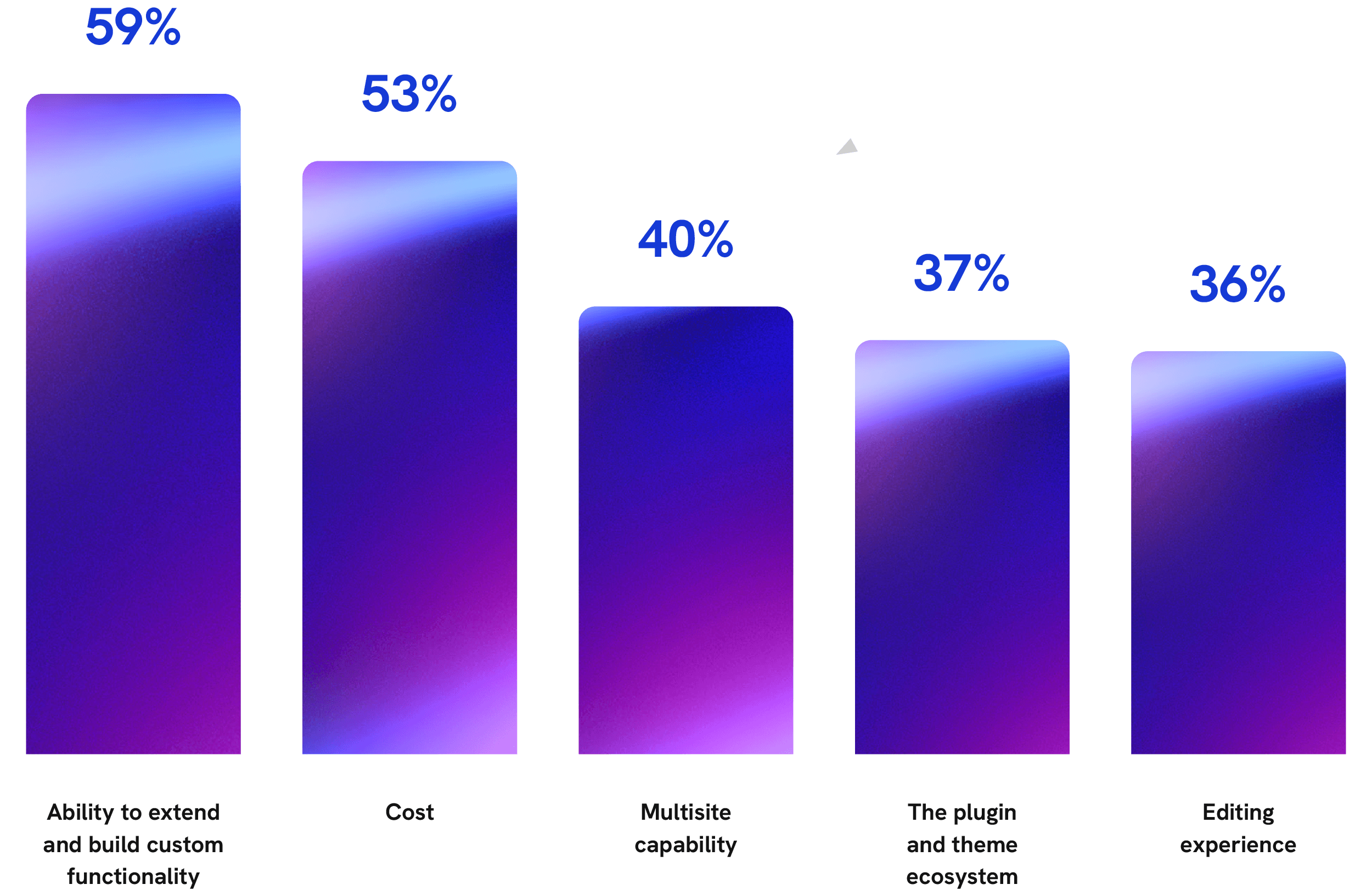
The biggest blockers? Time, training, and budget. Many institutions waited more than two years to adopt the Block Editor, citing resource constraints, technical maturity, and the need for user onboarding.
It’s no surprise, then, that a majority of respondents (69%) feel their web teams are under-resourced – particularly when it comes to headcount, technical capacity, and training.
Takeaway: Without investment in staffing and skills, teams will struggle to unlock the benefits of modern WordPress.

Download the State of WordPress in Higher Education report
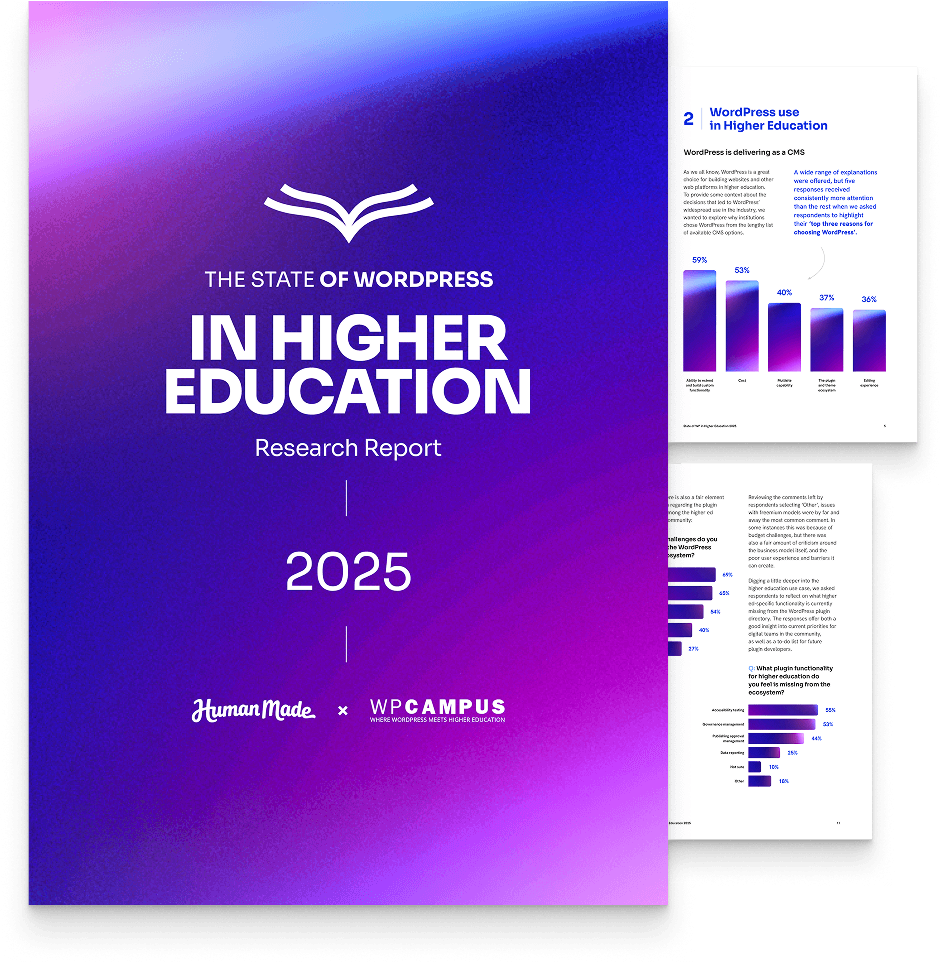
3. Training, governance, and accessibility need urgent attention
While most universities provide some WordPress training (80%), it’s typically limited to the basics: content editing, general usage, and accessibility. But recurring training is rare (only 12% offer it), and only a narrow majority of institutions (48% vs 45%) provide onboarding as a prerequisite to site access.
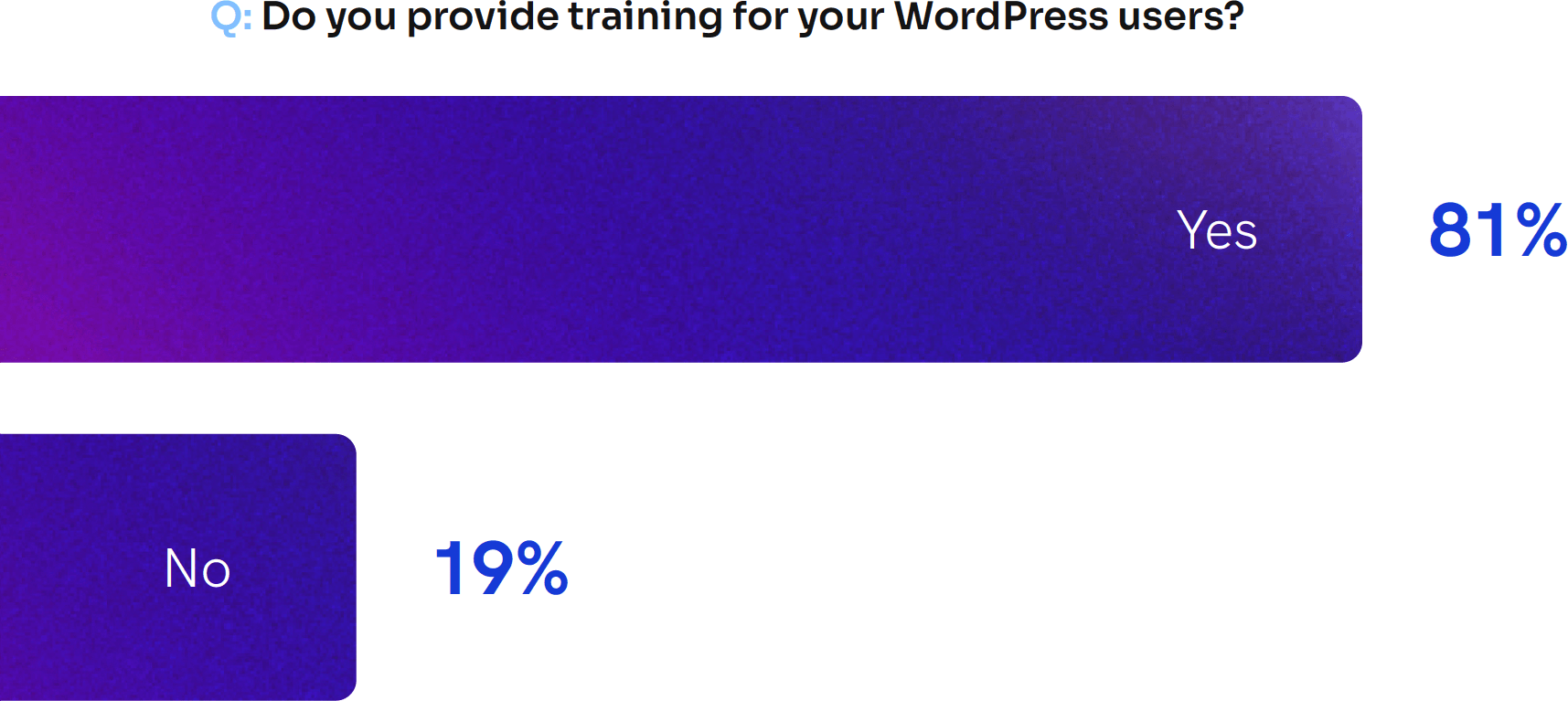
This underinvestment is reflected in the challenges content teams face: keeping content fresh and accurate, ensuring accessibility, and managing medias.
Regarding plugins, accessibility gaps were a common pain point, alongside bloated features, poor maintenance, and frustration with freemium models. Respondents called for better tooling around accessibility testing, governance workflows, and publishing approvals.
Takeaway: Content is at the core of higher education websites. Institutions must better support the people who manage it through improved training, robust governance, and accessible tooling.
4. Security and hosting are strong
Higher education teams are broadly satisfied with their hosting setups, and even more confident in the security of their WordPress installations: 76% agreed or strongly agreed they felt secure. This reinforces a key message we often share at Human Made – with the right infrastructure and processes, WordPress is definitely enterprise-grade.
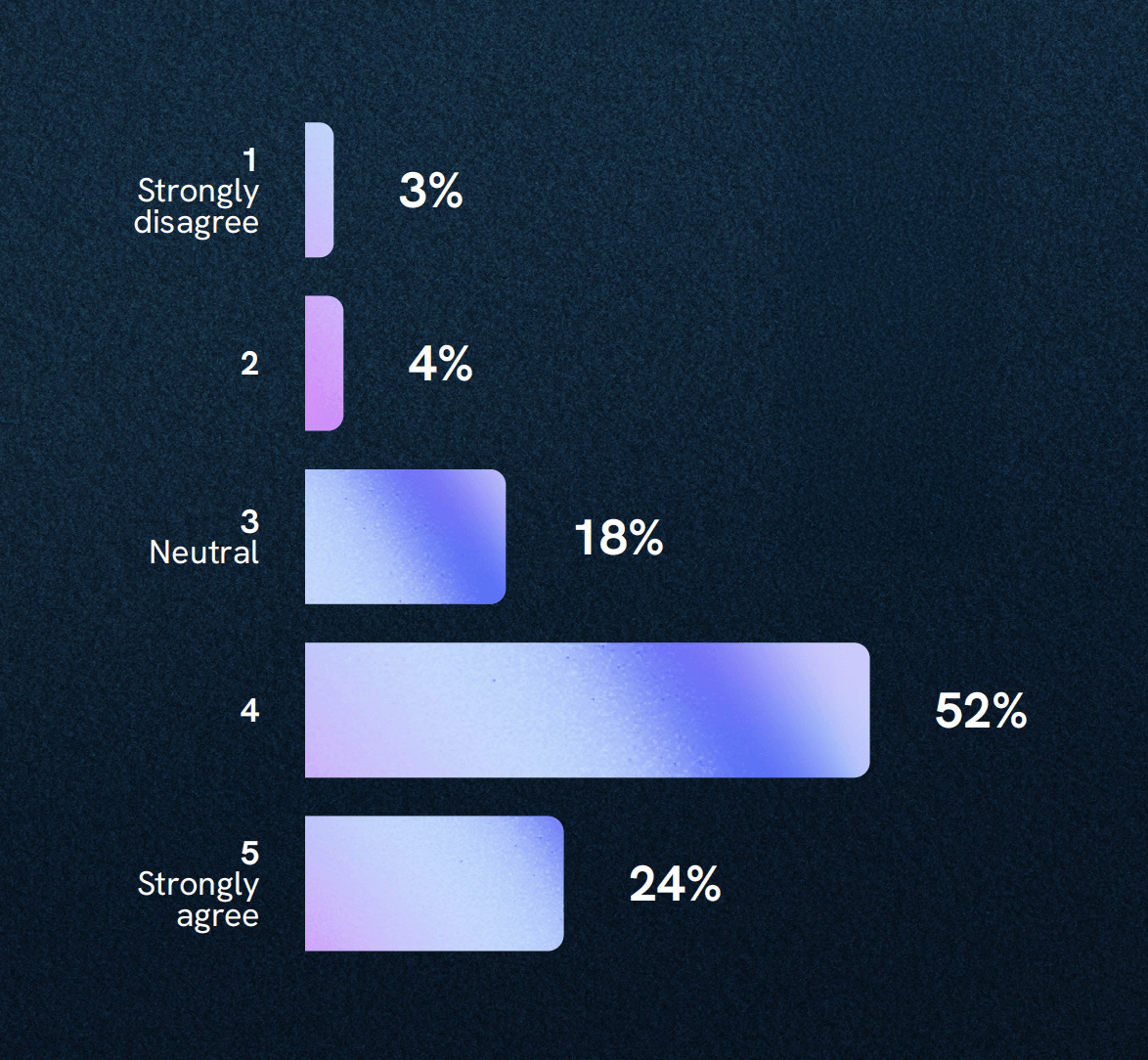
However, recent turbulence in the broader WordPress ecosystem has led to internal questions. 62% of respondents said discussions have taken place at their institutions about whether to continue using WordPress. While only 4% are planning a move away, a ‘wait and see’ attitude (61%) is widespread.
Calls for change were clear: respondents want improvements to user and role management (65%), the block editor (46%), plugin quality control (42%), and governance of the project overall (55%).
Takeaway: WordPress remains a secure and reliable choice, but project governance and product direction must evolve to maintain trust across institutional stakeholders.
5. Accessibility, workflows, and sustainability are top priorities for 2025
Looking ahead, institutions are prioritising the practical challenges that shape everyday use of WordPress. Enhancing accessibility (53%) and improving editorial workflows (40%) top the list, with sustainability, search optimisation, and AI integration also gaining traction.
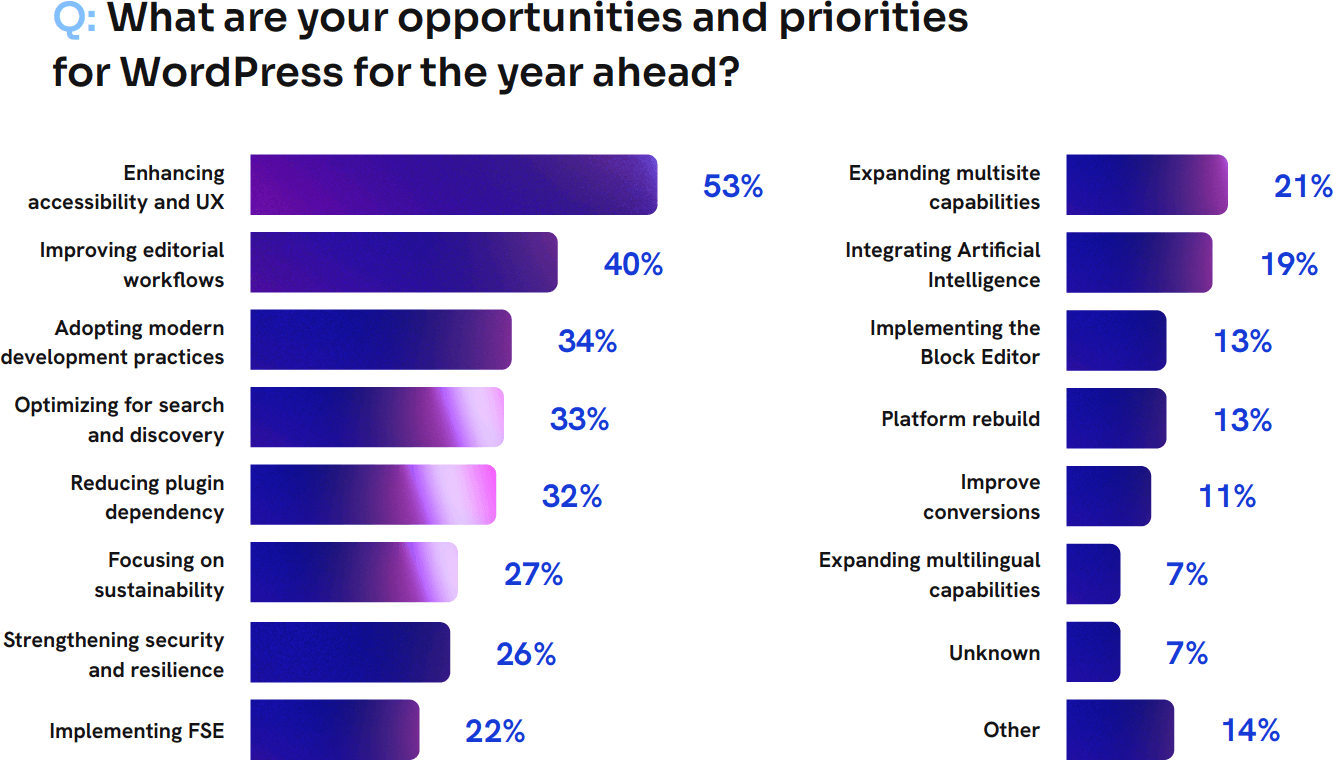
While some institutions plan to adopt FSE or modernise their tech stack, most are focused on building better internal systems and reducing dependency on third-party tools.
Budget constraints and the pace of platform change remain key obstacles. But with strong community ties and a shared commitment to open source, higher education teams are making the most of what they have – and pushing for a better WordPress for everyone.
Takeaway: Universities aren’t chasing trends; they’re doubling down on inclusive design, efficient workflows, and long-term maintainability. The WordPress ecosystem must meet them where they are.
Final thoughts on the State of WordPress in Higher Education
Higher education institutions have always had to deliver ambitious digital projects on tight budgets. What the State of WordPress in Higher Education 2025 shows is that WordPress is still a trusted partner, but the sector is asking more of it than ever before.
At Human Made, we believe in supporting that progress: building robust editorial workflows, designing accessible platforms, contributing to open source, and helping institutions make confident decisions about their digital future.
Explore the full report, or get in touch if you’d like to learn how we help higher education teams make WordPress work harder for them.
